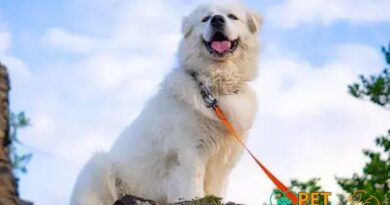What is breed characteristics
What Are Breed Characteristics?
Breed characteristics refer to the specific traits and behaviors that are inherent to particular dog breeds. These traits can include physical attributes such as size, coat type, and color, as well as behavioral tendencies like temperament, energy levels, and trainability. Understanding these characteristics is crucial for potential dog owners, as it helps them choose a breed that fits their lifestyle and preferences.
Physical Attributes of Dog Breeds
Each dog breed has distinct physical characteristics that set them apart from others. For instance, the Great Dane is known for its towering height, while the Dachshund is recognized for its long body and short legs. Coat types can vary widely, from the curly fur of a Poodle to the short, sleek coat of a Beagle. These physical traits not only contribute to a breed’s appearance but also affect their grooming needs and overall care requirements.
Temperament and Behavior
Temperament is another critical aspect of breed characteristics. Some breeds, like the Labrador Retriever, are known for their friendly and outgoing nature, making them excellent family pets. In contrast, breeds such as the Shiba Inu may exhibit more independent and aloof behavior. Understanding a breed’s typical temperament can help owners prepare for the kind of companionship and interaction they can expect.
Energy Levels and Exercise Needs
Different breeds also have varying energy levels, which directly influence their exercise requirements. High-energy breeds like the Border Collie require significant physical activity and mental stimulation to stay happy and healthy. On the other hand, breeds such as the Bulldog may be more sedentary and require less exercise. Matching a dog’s energy level with an owner’s lifestyle is essential for a harmonious relationship.
Trainability and Intelligence
Trainability is a key breed characteristic that can significantly impact a dog’s behavior and the owner’s experience. Breeds like the German Shepherd are known for their intelligence and eagerness to please, making them relatively easy to train. Conversely, some breeds may be more stubborn or independent, requiring more patience and consistent training methods. Understanding a breed’s trainability can help owners set realistic expectations for obedience and behavior.
Health Considerations by Breed
Each breed comes with its own set of health considerations, which are often linked to their physical characteristics. For example, brachycephalic breeds like the Pug may suffer from respiratory issues due to their short snouts. Similarly, larger breeds may be prone to hip dysplasia. Being aware of these health risks allows potential owners to make informed decisions and prepare for potential veterinary needs.
Socialization Needs
Socialization is vital for all dogs, but the extent and type of socialization required can vary by breed. Breeds that are naturally more social, like the Golden Retriever, may thrive in environments with lots of interaction with people and other animals. In contrast, more reserved breeds may require gradual exposure to new experiences to build confidence. Understanding these socialization needs can help owners foster well-adjusted pets.
Grooming Requirements
Grooming needs are another important aspect of breed characteristics. Some breeds, such as the Shih Tzu, require regular grooming to maintain their coat, while others, like the Boxer, have minimal grooming needs. Understanding the grooming requirements of a breed can help owners prepare for the time and financial commitment involved in keeping their dog looking and feeling its best.
Choosing the Right Breed for Your Lifestyle
When considering what breed characteristics are most important, potential dog owners should reflect on their lifestyle, living situation, and personal preferences. Factors such as the amount of time available for exercise, grooming, and training should all play a role in breed selection. By aligning breed characteristics with personal circumstances, owners can ensure a fulfilling and enjoyable companionship with their canine friends.



